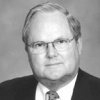Making Peoria a Technology Hub
Peoria is in a unique position to develop a new industry based upon our many technical strengths and resources. Peoria NEXT is aggressively cultivating new businesses, which will be located in our newly created Medical Technical District in the heart of our community.
Peoria NEXT represents the combined efforts of community and business leaders; medical professionals; and our federal, state, and local elected representatives, who are working together to achieve our goal of becoming a world-class player in technology-based businesses.
With a high level of technical research already occurring in the Peoria area, we have great potential for technological startups based upon the commercialization of that research. As manufacturing has moved to lower cost venues, we’ve developed broad-based plans to create an environment in which exciting new companies can diversify and enhance our economy and the quality of life in our community.
In spite of a weak economy, the health care industry has grown to nearly 13 percent of the nation’s gross domestic product. The central Illinois region is fortunate to have the medical leadership from OSF Saint. Francis Medical Center, Methodist Medical Center, and Proctor Hospital. We’re also home to the University of Illinois College of Medicine at Peoria.
The presence of the USDA National Center for Agriculture Utilization Research Lab adds another dimension to our technology base. Our USDA Lab is the largest Federal Agriculture Research Services Lab in the United States. In addition to its leading edge research, the lab provides space for business collaboration and incubation Caterpillar’s research park will contribute even further to the diversity of our technological diversity.
In addition to all of these assets, we’re home to Bradley University and Illinois Central College. Bradley’s recent expansion of the Olin Hall of Science, coupled with ICC’s new technology center and ICC North, will improve their capability for technical education and training.
Communities across America have been economically impacted-some negatively and some positively-by technology. Peoria has enormous economic development potential. A multitude of community partnership opportunities will become available for the future of technological commercialization in our community. These technologies will cover a wide variety of disciplines.
The area along West Main Street will be the center of the Medical Technical District. I’ve recently appointed the members of the Medical Technical District Commission and the Advisory Council, representing the neighborhoods, which are part of the district. Planning activities will soon begin, which will reshape and revitalize the area for years to come.
This is an exciting time for Peoria. The Medical Technical District holds great promise for our future. With the emergence of this new industry, we’re entering a new era of economic development, job creation, and the revitalization of some of our older neighborhoods. IBI
Peoria NEXT represents the combined efforts of community and business leaders; medical professionals; and our federal, state, and local elected representatives, who are working together to achieve our goal of becoming a world-class player in technology-based businesses.
With a high level of technical research already occurring in the Peoria area, we have great potential for technological startups based upon the commercialization of that research. As manufacturing has moved to lower cost venues, we’ve developed broad-based plans to create an environment in which exciting new companies can diversify and enhance our economy and the quality of life in our community.
In spite of a weak economy, the health care industry has grown to nearly 13 percent of the nation’s gross domestic product. The central Illinois region is fortunate to have the medical leadership from OSF Saint. Francis Medical Center, Methodist Medical Center, and Proctor Hospital. We’re also home to the University of Illinois College of Medicine at Peoria.
The presence of the USDA National Center for Agriculture Utilization Research Lab adds another dimension to our technology base. Our USDA Lab is the largest Federal Agriculture Research Services Lab in the United States. In addition to its leading edge research, the lab provides space for business collaboration and incubation Caterpillar’s research park will contribute even further to the diversity of our technological diversity.
In addition to all of these assets, we’re home to Bradley University and Illinois Central College. Bradley’s recent expansion of the Olin Hall of Science, coupled with ICC’s new technology center and ICC North, will improve their capability for technical education and training.
Communities across America have been economically impacted-some negatively and some positively-by technology. Peoria has enormous economic development potential. A multitude of community partnership opportunities will become available for the future of technological commercialization in our community. These technologies will cover a wide variety of disciplines.
The area along West Main Street will be the center of the Medical Technical District. I’ve recently appointed the members of the Medical Technical District Commission and the Advisory Council, representing the neighborhoods, which are part of the district. Planning activities will soon begin, which will reshape and revitalize the area for years to come.
This is an exciting time for Peoria. The Medical Technical District holds great promise for our future. With the emergence of this new industry, we’re entering a new era of economic development, job creation, and the revitalization of some of our older neighborhoods. IBI

